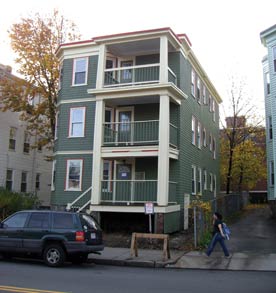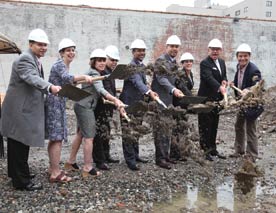Boston’s 9,000 three-family, or “triple-decker,” houses are trademarks of the city’s housing stock and have long provided shelter to the city’s working class and lower-income populations. When the economic downturn hit, many of those buildings — in some cases dating back to the 1880s — fell into disrepair.
In response, the city has established the 3D Campaign, which offers up to $30,000 in interest-free financing for repairs made by existing owner-occupants, or up to $20,000 toward a downpayment for first-time homebuyers looking to purchase a triple-decker. While the program does not include affordability covenants, it does require potential purchasers to fall under 120 percent AMI. A property must also include a vacant unit for the owner (who must take a landlord training workshop) to live in and buyers are not allowed to own other properties. Existing owner-occupants applying for repair assistance must have less than $75,000 in financial assets, excluding the value of the residence and retirement accounts.
In an age when “subsidy” is a four-letter word, Boston’s triple-deckers represent a market-rate affordability that remains elusive in other similarly strong markets. Along with their smaller brethren, the double-deckers, they provide nearly 70 percent of the city’s affordable apartments for low-income households. Roughly half of them are owner occupied.
Two- to four-unit unsubsidized properties actually provide a majority of the affordable housing for low-income households nationwide. But, as was discussed at length in a recent roundtable discussion we hosted, those units are steadily being lost to deferred maintenance, restrictive codes, and conversion.
Foreclosed properties are exempted from the 3D Campaign, which is too bad, and we’d like to see more in the way of explicitly protecting and preserving affordability. Boston has largely framed the 3D Program as a way to retain city character rather than as an effort to protect the city’s market-rate affordable housing stock. Nevertheless, this program, with some adaptation, could be a model for how to do both.





Comments